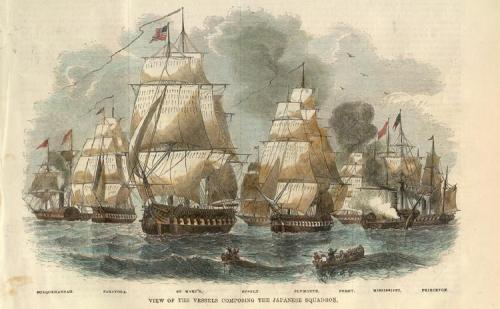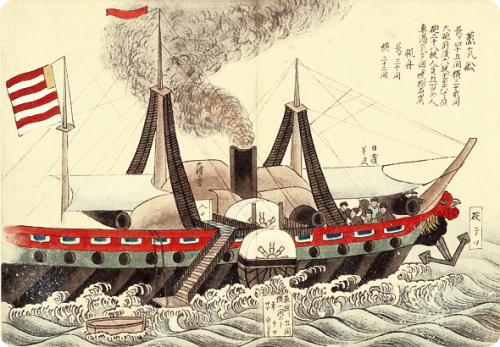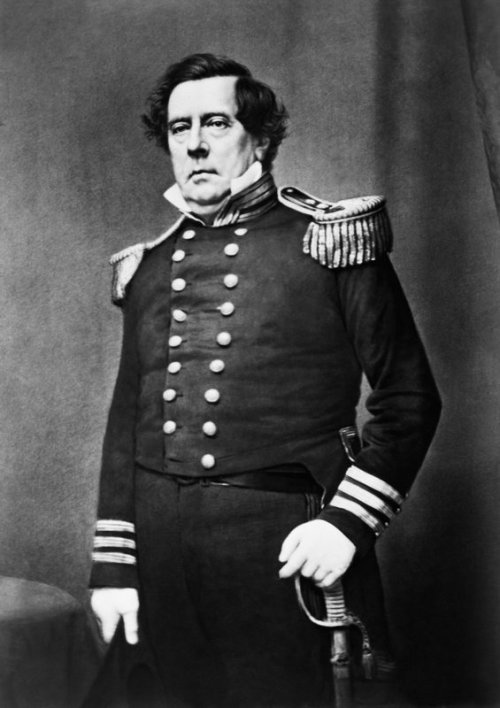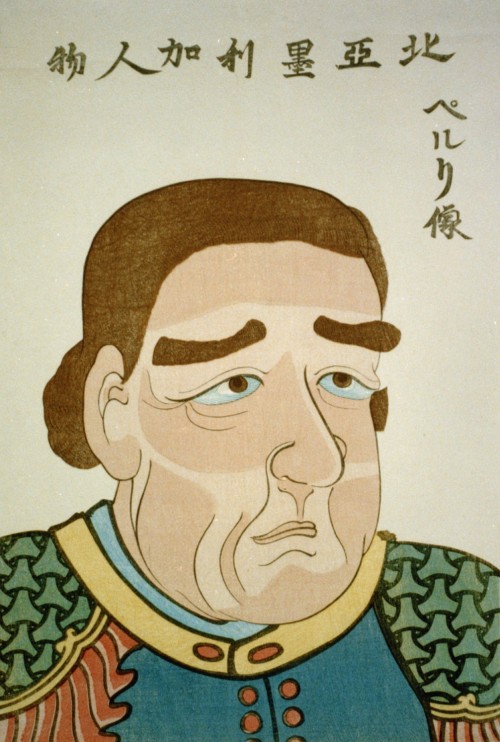Today in History, July 8-14th, 1853, Commodore Perry Opens Relations with Japan at the Point of a Gu
Today in History, July 8-14th, 1853, Commodore Perry Opens Relations with Japan at the Point of a Gun.When the Tokugawa shogunate gained control of Japan in 1603, the first order of business was to cleanse Japan of all foreign influence. The Tokugawa shogunate enforced a strict policy of isolationism from the rest of the world. Japanese subjects were forbidden from leaving the country, and trade was restricted to a small number of Dutch merchants confined to Nagasaki. The Tokugawa went so far as to forbid shipbuilding to small fishing boats. For the next 350 years Japan remained isolated from most of the world, sheltering itself from western imperialism but missing out on the technological and social advancements of the West. By the mid 19th century, Japan was still a medieval feudal state that was little different from the Japan of the ancient Samurai. That all changed on July 8th and 9th, when a powerful fleet of warships entered Tokyo Harbor and started making demands.Many businessman and politicians in the west saw Japan as an untapped source of wealth in trade and business. The only thing that stood in the way was Japan’s isolationist policy. In 1852, US President Millard Fillmore resolved to make an effort to change all of that. He commissioned an American naval fleet to deliver a treaty to the Japanese which outlined American demands, the most important of which was to open Japan to American trade. The fleet consisted of four warships, the USS Mississippi, the USS Plymouth, the USS Saratoga, and the USS Susquehanna. Commanding the fleet was Commodore Matthew Perry, an experienced naval officer and Mexican American War veteran who became known as the “father of the steam navy.” Millard Fillmore tasked Perry with delivering the treaty to the Tokugawa, and authorized him to use force if necessary.Perry’s fleet disembarked from Norfolk, Virginia in 1852, and arrived at Tokyo (Edo) Bay in July 8th, 1853. At first he was met with a flotilla of small Japanese boats that blocked his access from the harbor. The Japanese demanded Perry turn around, but the small unarmed boats were no match for the fleet, which had a combined armament of 67 heavy guns. Many of the fleets heavy ordinance were Paixhans guns, state of the art heavy naval guns which fired devastating high explosive shells.On July 9th, Perry’s fleet sailed past the Japanese flotilla and entered Tokyo Harbor. The Japanese demanded Perry leave, but with Tokyo lightly defended by obsolete weapons, there was nothing they could do to stop him. Commodore Perry then demanded he be allowed ashore to present the treaty to the Tokugawa officials. When he was refused, Perry ordered the shelling of a few harbor front buildings. The Japanese were helpless as their outdated cannon couldn’t even achieve the range to fire back at the fleet. Seeing that the situation was hopeless, the Japanese granted Perry’s request on July 14th.Commodore Perry returned a year later to find that the Japanese had heavily fortified Tokyo harbor. However the obsolete Japanese weaponry was so pathetic that it could scarcely harm Perry’s fleet, which was twice as large as the previous. The Japanese gave in to all American demands. As a result, other powerful nations such as Britain, France, Russia, and Germany also demanded similar terms. In an instant, the ancient culture of medieval Japan came to an end, signalling the birth of a modern nation. -- source link
Tumblr Blog : peashooter85.tumblr.com
#history#japanese history#japan#commodore perry#international relations#politics#us navy#american history#tokugawa#trade#commerice#diplomacy#tokyo#edo




